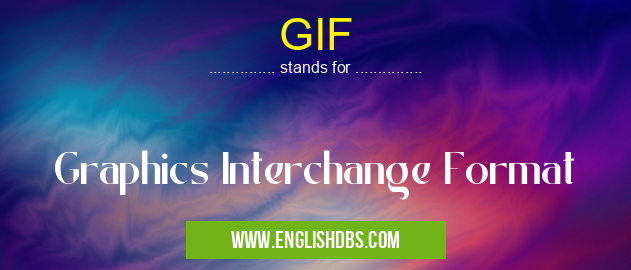What does GIF mean in ELECTRONICS
GIF is an acronym that stands for Graphics Interchange Format. It is a bitmap image format that supports up to 8 bits per pixel, allowing for a maximum of 256 distinct colors. GIFs are widely used for web graphics, particularly for small animations and logos.

GIF meaning in Electronics in Academic & Science
GIF mostly used in an acronym Electronics in Category Academic & Science that means Graphics Interchange Format
Shorthand: GIF,
Full Form: Graphics Interchange Format
For more information of "Graphics Interchange Format", see the section below.
History of GIFs
The GIF format was developed by CompuServe in 1987. It was originally intended as a way to compress images for use in online forums and bulletin board systems (BBSs). GIFs quickly became popular due to their small file size and support for animation.
Key Features of GIFs
- Lossless Compression: GIFs use a lossless compression algorithm, meaning that the original image data is not lost during compression. This results in high-quality images with sharp edges and clear details.
- Support for Animation: GIFs can be animated by combining multiple images into a single file. The animation can be played back repeatedly, making GIFs a popular choice for creating simple animations and short videos.
- Transparency: GIFs support transparency, allowing for images with transparent backgrounds. This makes them ideal for overlaying on web pages and other graphics.
Uses of GIFs
- Web Graphics: GIFs are commonly used for web graphics, such as logos, buttons, and animated banners.
- Social Media: GIFs are widely shared on social media platforms to express emotions, reactions, and ideas.
- Animation: GIFs can be used to create simple animations, such as cartoons, memes, and infographics.
- Email Marketing: GIFs can be included in emails to add visual interest and engage recipients.
Advantages and Disadvantages of GIFs
Advantages:
- Small file size
- Support for animation
- Transparency
- Lossless compression
Disadvantages:
- Limited color palette
- Can be slow to load
- Not suitable for large or complex images
Essential Questions and Answers on Graphics Interchange Format in "SCIENCE»ELECTRONICS"
What is GIF?
Graphics Interchange Format (GIF) is a bitmap image format that supports transparency. It was developed in 1987 by CompuServe as a way to compress images for online transmission. GIFs are widely used on the web and in social media, as they can be animated and take up less space than other image formats.
What are the advantages of using GIF?
GIFs have several advantages over other image formats:
- Transparency: GIFs support transparency, which allows you to create images with transparent backgrounds. This makes them ideal for use in web design and social media.
- Animation: GIFs can be animated, which allows you to create simple animations. This makes them ideal for use in creating animated logos, banners, and other graphics.
- File size: GIFs are typically smaller in file size than other image formats, such as JPEGs and PNGs. This makes them ideal for use in online applications, where bandwidth is a concern.
What are the disadvantages of using GIF?
GIFs also have some disadvantages:
- Color depth: GIFs only support 256 colors, which can limit the range of colors that can be used in an image.
- Interlacing: GIFs can be interlaced, which means that they are displayed in a series of passes. This can cause images to appear blurry or pixelated when they are first loaded.
- Patents: The LZW compression algorithm used in GIFs is subject to patents in some countries. This can make it difficult to use GIFs in commercial applications.
How can I create a GIF?
There are several ways to create a GIF. You can use a dedicated GIF creation tool, such as GIMP or Photoshop, or you can use an online GIF creation service, such as EZGIF.com.
How can I use a GIF?
GIFs can be used in a variety of ways. You can use them on websites, in social media, or in email. You can also use them in presentations or other documents.
Final Words: GIF is a versatile image format that offers a unique combination of small file size, animation support, and transparency. While its limited color palette and slow loading times may be drawbacks for some applications, GIFs remain a popular choice for web graphics, social media, and animation.
